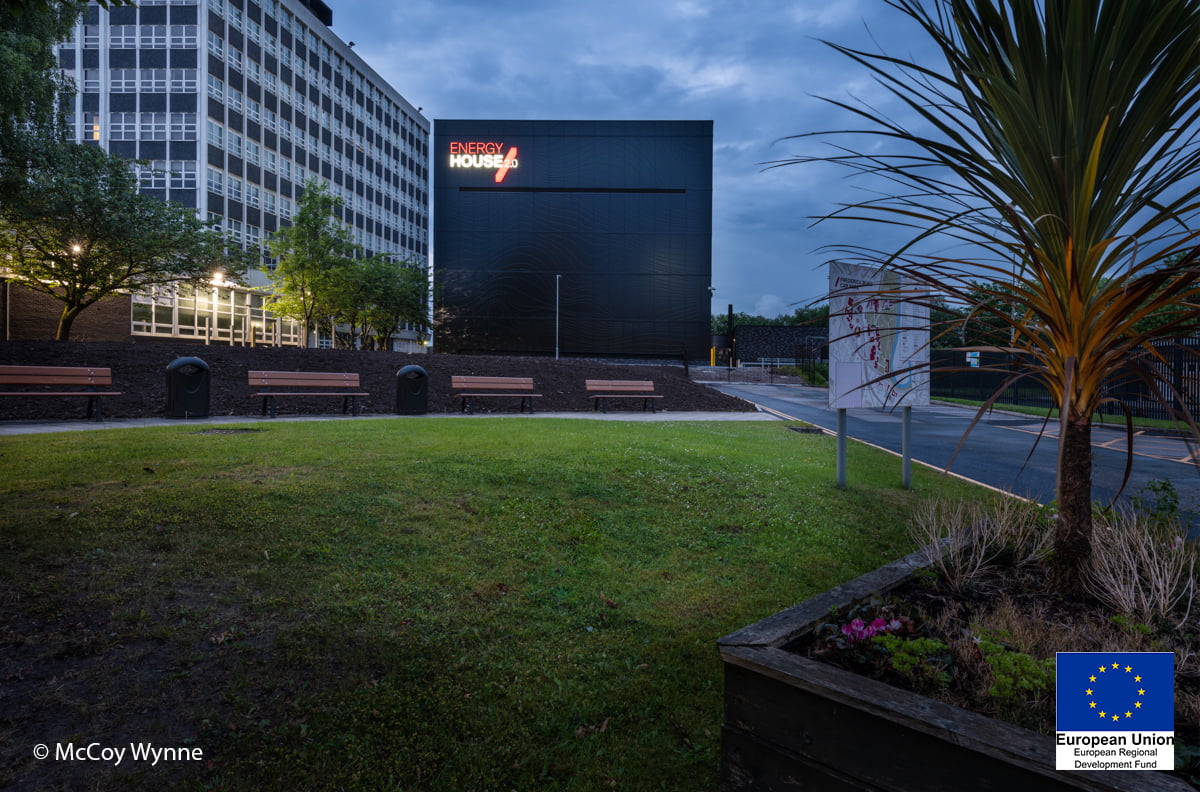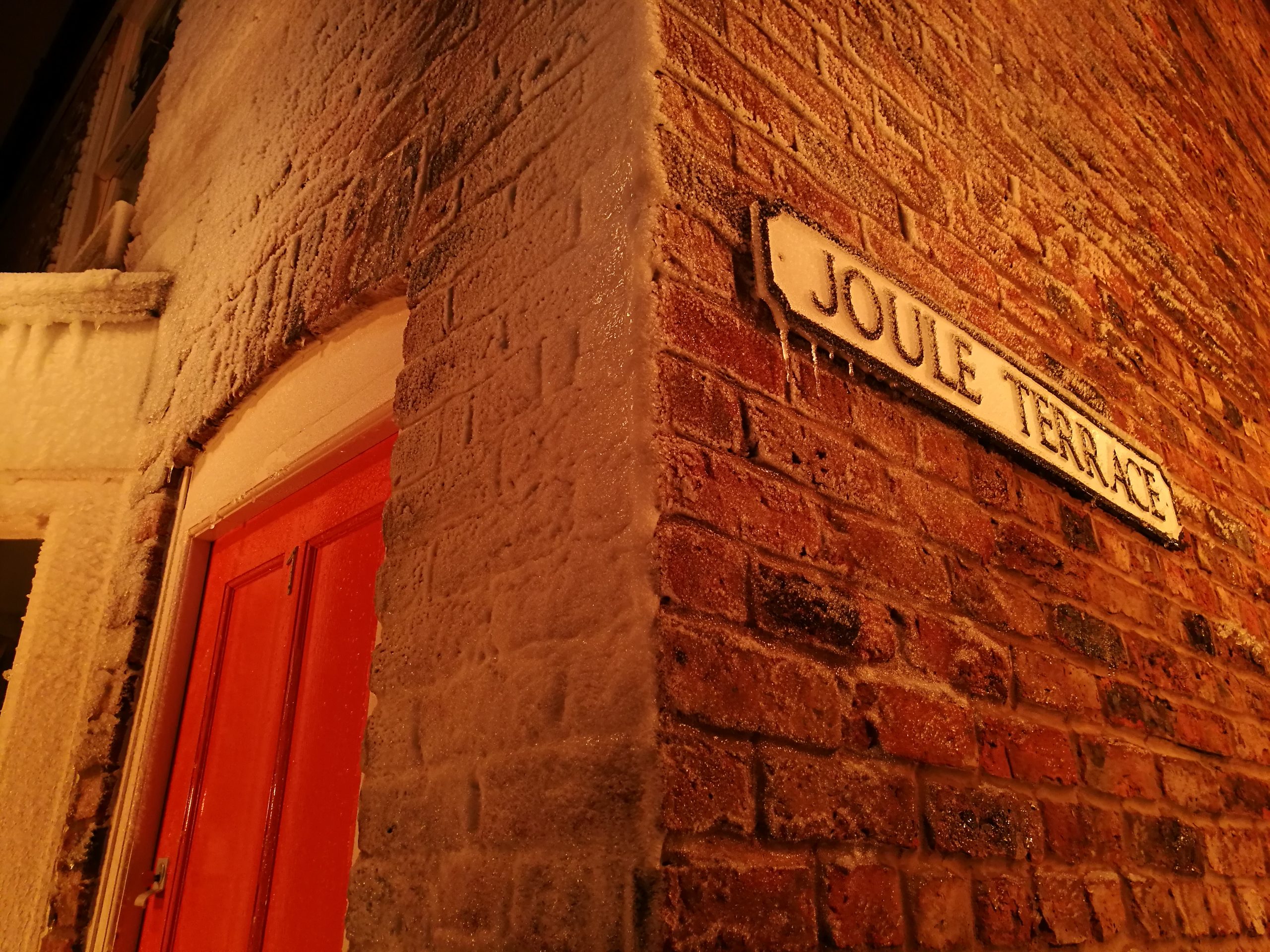Down at their Energy House on ‘Joule Terrace’, Salford University’s experts told us all about the innovative work they’re doing to address, test and learn from the products and services that we’ll need as we move towards lowering energy bills and reducing carbon emissions.
Their tiny Victorian two-bed terrace was originally fitted with an old gas boiler and traditional ‘wet’ heating system. It has an environmental chamber where the team can accurately assess new energy efficient retrofit technologies.
Peering through its windows, and looking out across its external red bricked wall, you can see just some of the 200+ sensors that are collecting data on heat, humidity, and everything in between.




